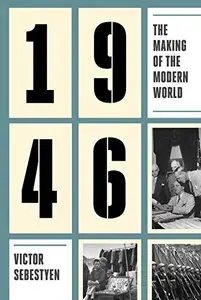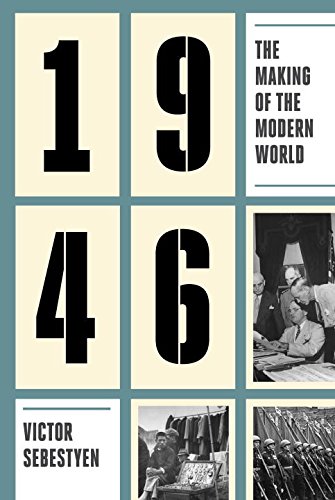Victor Sebestyen, "1946: The Making of the Modern World"
English | ISBN: 1101870427 | 2015 | EPUB | 464 pages | 30 MB
English | ISBN: 1101870427 | 2015 | EPUB | 464 pages | 30 MB
From the author of Twelve Days: The Story of the 1956 Hungarian Revolution and Revolution 1989: The Fall of the Soviet Empire comes a powerful, revelatory book about the year that would signal the beginning of the Cold War, the end of the British Empire, and the beginning of the rivalry between the United States and the USSR. Victor Sebestyen reveals the events of 1946 by chronologically framing what was taking place in Europe, the Middle East, and Asia, with seminal decisions made by heads of state that would profoundly change the old order forever. Whether it was the July 22 bombing of the King David Hotel in Jerusalem, the July 25 Bikini Atoll underwater atomic bomb test, or the August 16 Great Calcutta Killings in India, 1946 was a year of seismic and dramatic events.
Sebestyen begins with the Moscow Foreign Ministers’ Conference the week before Christmas 1945, when Stalin announced that the USSR would not withdraw its troops from Iran by March 1946, and ends with the morning of November 3, 1946, when Emperor Hirohito officially unveiled Japan’s new constitution before the National Diet. The year 1946 would see the map of Eastern Europe redrawn, Chinese communists gaining decisive victories in their fight for power, and the birth of Israel.
Though Truman, Stalin, Churchill, MacArthur, Ben-Gurion, Hirohito, and Menachem Begin are part of the story, Sebestyen also writes about the enormous suffering and ongoing persecution of civilians in the aftermath of the war: the pillaging and rape; the ethnic cleansing of the German population from Czechoslovakia and Poland; the rise of a violent new anti-Semitism; the civil wars in China and Greece; the mass starvation in Japan, Eastern Europe, and Germany on a scale not seen since the Middle Ages; the spread of diseases such as tuberculosis and diphtheria; and such total desolation that schools, government, and transportation were nonexistent and currency was worthless.
Drawing on personal testimonies and new archival research, Sebestyen has written a vivid and compelling narrative that brilliantly evokes the beginning of the Cold War set against a devastated landscape of dystopian horrors.



